Chainsaws are indispensable instruments for landscaping, tree clearance, and other labor-intensive chores. Chainsaws, like all machinery, can sustain damage and require repairs. Piston damage is one of the most prevalent problems encountered by chainsaw owners.
Overheating, a lack of lubrication, fuel contamination, an improper fuel mixture, and impact damage are all major causes of chainsaw piston damage.
The engine may need to be removed and either the piston and cylinder changed, the piston rings replaced, or the carburetor rebuilt to remedy chainsaw piston damage.
Proper maintenance, such as cleaning the engine and using the proper fuel combination, can help to prevent future damage and increase the life of the chainsaw.
In this article, we will discuss the causes of chainsaw piston damage and the repair solutions available.
Table of Contents
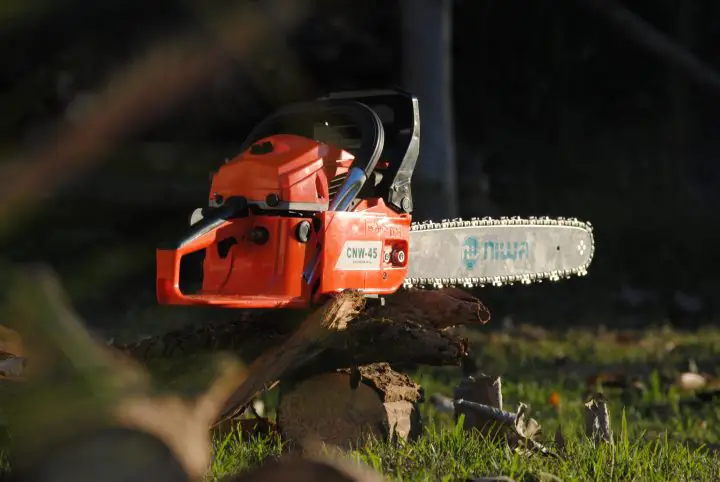
Causes of Chainsaw Piston Damage
The main cause of chainsaw piston damage is typically due to excessive leanness, which can be caused by issues with the carburetor adjustment, fuel line problems, or air leaks. Overheating can exacerbate the damage and cause a reduction in oil delivery, further speeding up the damage process.
Lean seizure can be triggered by a variety of factors, and the damage usually starts around the exhaust, but can also spread to the other side. A lack of oil in the mix typically results in scoring all around the piston, with the worst damage seen closer to the exhaust.
An air leak has a similar effect as misadjusting the carb, as it results in an excessively lean air/fuel mix by allowing air to enter from sources other than the carb. A hole in the fuel line can also cause the engine to run lean by starving the carb of fuel.
Running lean on fuel creates a double problem: not only does the engine run too fast, but since the oil is in the fuel mix, it also results in a reduction of lubrication, causing temperatures to rise rapidly.
If a chainsaw starts running lean, it is easy to notice – it sounds high-pitched, like it’s running out of gas, and lacks power. In this case, it’s important to turn off the saw and figure out the problem before further damage is done.
However, if a blocked carb jet or air leak is the cause, shutting down the saw and fixing the issue promptly can prevent serious damage from occurring. If you continue to use the saw, it can be ruined in less than a minute.
Overheating
One of the most common reasons of chainsaw piston damage is overheating. Chainsaws generate a lot of heat while operating, and if used for an extended period of time, the temperature can rise to the point where it ruins the piston.
Overheating can also occur as a result of worn chains, inadequate lubrication, clogged air filters, or a faulty cooling system.
Lack of Lubrication
The chainsaw’s engine needs proper lubrication to keep the moving parts working smoothly. Lack of lubrication can lead to metal-to-metal friction, causing the piston and cylinder walls to become damaged.
Fuel Contamination
If the chainsaw’s fuel is contaminated with water or debris, it can cause damage to the engine and specifically, the piston. The impurities in the fuel can clog the carburetor and cause the engine to seize.
Incorrect Fuel Mixture
If the chainsaw’s fuel mixture is not correctly blended, it can cause engine damage, including piston damage. Visit our Fuel Oil Ratio Mix Guide to learn about the How to Mix Chainsaw Gas at the Correct Ratio!
Impact Damage
Chainsaws are designed to handle tough jobs, but they can still experience impact damage if they are dropped or hit. Impact damage can cause the piston to crack or become damaged.
Chainsaw Piston Repair Solutions
Piston and Cylinder Replacement
If the piston is damaged beyond repair, the best solution is to replace both the piston and the cylinder. This involves removing the engine from the chainsaw and disassembling it. A new piston and cylinder kit can then be installed, and the engine can be reassembled.
Piston Ring Replacement
If the piston rings are damaged, they can be replaced without having to replace the entire piston. This involves removing the engine from the chainsaw, disassembling it, and replacing the damaged rings.
Cleaning and Lubrication
If the chainsaw’s engine is dirty or lacks proper lubrication, it can cause damage to the piston. Cleaning the engine and adding the correct amount of oil can prevent further damage and extend the life of the chainsaw.
These are tasks that should already be part of your maintenance schedule. Visit our Chainsaw Maintenance Checklist for all our tips and tricks!
Air Leak
An air leak can be found by conducting a pressure/vacuum test of the crankcase, crank seal, and fuel line. If one is found, replace the necessary components.
Carburetor Repair
If the carburetor is clogged or malfunctioning, it can cause the engine to overheat and damage the piston. Cleaning or repairing the carburetor can prevent further damage and extend the life of the chainsaw.
Learn more about carburetors in our How to Tune a Chainsaw guide!
Here is a useful YouTube demonstration on repairing a Husqvarna chainsaw piston and cylinder:
FAQs (Frequently Asked Questions)
Can a damaged chainsaw piston be repaired?
Yes, depending on the extent of the damage, a damaged chainsaw piston can be fixed. Minor damage, such as a small crack or scratch, can often be remedied by honing or polishing. If the damage is severe, such as a broken piston skirt or extensive scoring, the piston may need to be replaced. In either situation, a professional chainsaw mechanic or manufacturer should be consulted for thorough diagnosis and repair.
What happens if a chainsaw piston is damaged?
A damaged chainsaw piston can impair the chainsaw’s performance and efficiency. The chainsaw may not start, run poorly, or entirely seize up depending on the level of the damage. Excessive vibration and wear on other components, such as the cylinder, bearings, and crankshaft, can also result from a damaged piston, resulting in extra damage and costly repairs. A damaged piston might cause the chainsaw to fail in severe circumstances, potentially injuring the operator. It is critical to maintain and examine your chainsaw on a regular basis to avoid piston damage and ensure safe and effective performance.

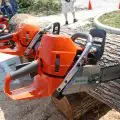
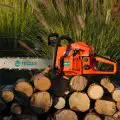
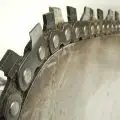
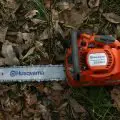
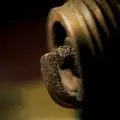
You may had someone asking you if scratched chainsaw piston once new rings
are replaced can be used ?
I got a few chainsaw with scratches a Stihl MS180 —-two Mac Culloch M3816 and M2214 AV
Thank you for your time .